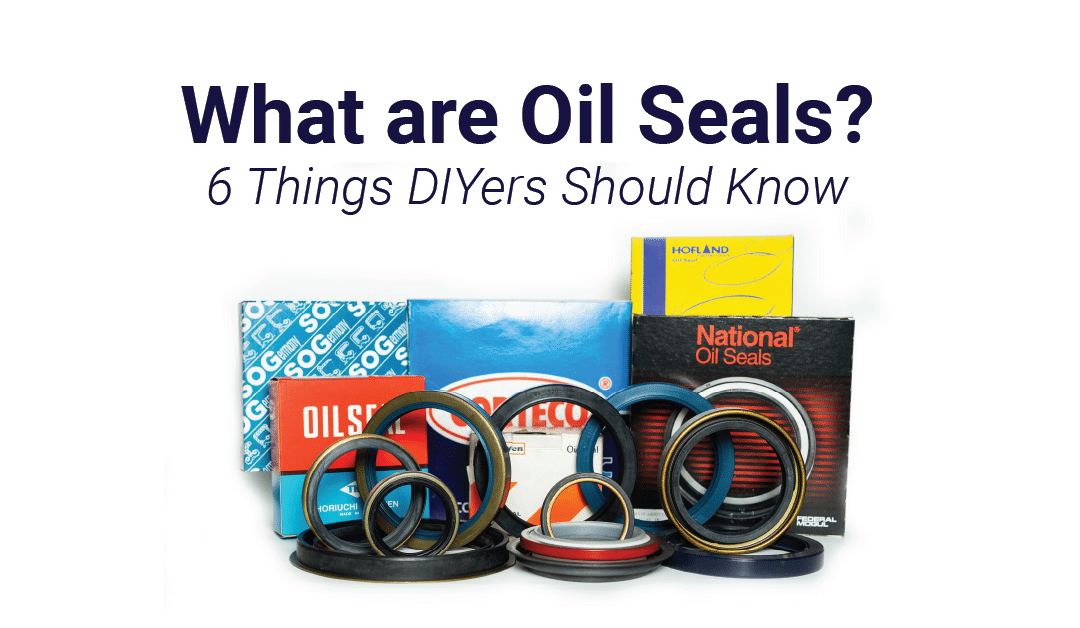If oil is dripping down your motorcycle’s tube, your vehicle’s performance will be affected. It won’t have as much power, and you’ll notice it acting sluggishly.
One common reason leaking occurs in engines is that debris is caught in the fork seal, holding it open and allowing oil to sneak by. So, how do you fix this? This is where the little circular devices come in—oil seals.
What Is an Oil Seal?
An oil seal is a device used to prevent dirt, dust, water, or any other foreign matter from contaminating shafts and bearings in the rotary shaft equipment. Also known as a shaft seal or dirt seal, it also blocks the leakage of lubricants such as grease and oil along a rotating shaft.
6 Things about Oil Seals You Need to Know
In this post, we’ll go over the fundamental things you need to know as a DIYer when working with oil seals.
1. Oil seals have three basic components: sealing element, metal case, and spring.
- Sealing element – The sealing element constitutes the interior of the oil seal. Its purpose is to stop the fluid from leaking between the shaft and the housing. The materials typically used are fluorinated rubber, silicone, nitrile, and acrylic.
- Metal case – The metal case serves as the frame of the oil seal. Its primary function is to give rigidity and strength to the seal. The material is selected depending on the environment where the seal is to be used.
- Spring – The garter spring is a steel coil located at the end of the primary sealing lip. It is used to apply pressure to the sealing lip against the shaft. Typically, it is made of carbon steel or stainless steel.
2. The most common types of oil seals are rubber-cased and metal-cased.
Metal-cased oil seals are usually installed in a housing bore made of the same material. This allows for equal expansion and contraction of the materials during operation, preventing leakage. This type performs best when used in a steel housing.
Meanwhile, rubber-cased oil seals are used under conditions where a metal-cased seal can fail (for example, because of thermal expansion). Unlike the metal-cased type, these seals do not rust. Moreover, they can seal a lightly damaged housing better than metal-covered seals since, in high temperatures, rubber can provide a more stable sealability.
However, rubber-cased seals do have limitations. For example, during installation, shear stresses can build up between the seal and housing wall, causing the seal to release itself.
3. Dust and debris are common reasons for oil seal failure.
Entry of dust and debris is one of the most common reasons oil seals fail. For instance, in high-pressure applications, even the smallest sediments can create a gap in the seal, causing the oil to leak and dirt to get in.
An effective way to ensure particles do not contaminate your oil seal is to store it in a container or sealed bag away from areas where dust and debris are prevalent. Resealable, heavy-duty plastics bags and bins are ideal for keeping your shaft seal protected.
4. Protecting the shaft from damage helps optimize your oil seals’ efficiency.
Even the slightest chip or dent can cause contaminants to infiltrate your oil seal. If there are any scratches on the shaft, a leak path may develop, allowing the lubricant to drip. To protect the shaft from damage, wrap it in a mesh rubber screen and store it vertically in its compartment. This way, it can be shielded from potential cracking.
5. Sealing the grease container when not in use reduces the risk of contamination.
If you use accessories such as installation tools or grease containers, it is just as important to ensure they are taken care of. A good practice is to cover grease containers with a sealable lid when not in use. In doing so, you reduce the risk of dirt contaminating the grease and, subsequently, your oil seal.
For installation tools, make sure that they do not have any jagged edges that may damage the seal during the installation process.
6. Proper installation is key to effective oil seal performance.
Improper installation can cause your oil seal to malfunction. While being tapped into place, it can become tilted or misaligned in the bore. That being said, setting it up correctly will help ensure that the sealing process is effective.
One way to recognize an improperly installed seal is by checking whether or not there is uneven shearing of the rubber after use. If this is evident, adjust by aligning the installation tools properly before pressing the seal into place.
Oil Seals Enable Your Equipment to Operate Efficiently
Oil seals serve an important function in preventing lubricant leaks by closing in the spaces between the parts of the rotary shaft equipment. They also prevent dirt, dust, and other contaminants from clogging up the unit. Having them properly installed enables engines, pumps, and pipes to operate more efficiently.
Simplex is a premier oil seal supplier and seller of high-quality industrial and engineering parts made from various materials. Browse our online shop for the full line of our products.

